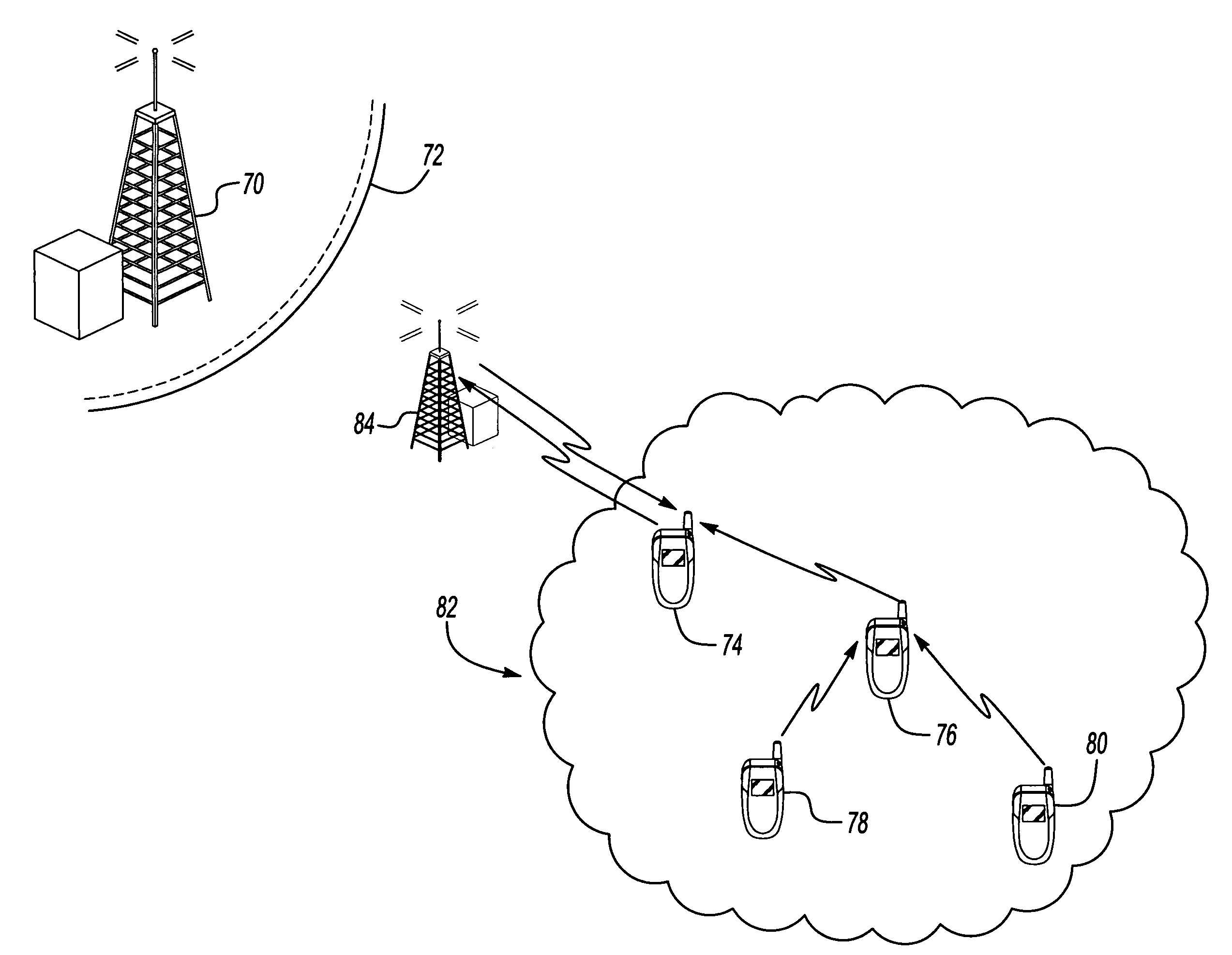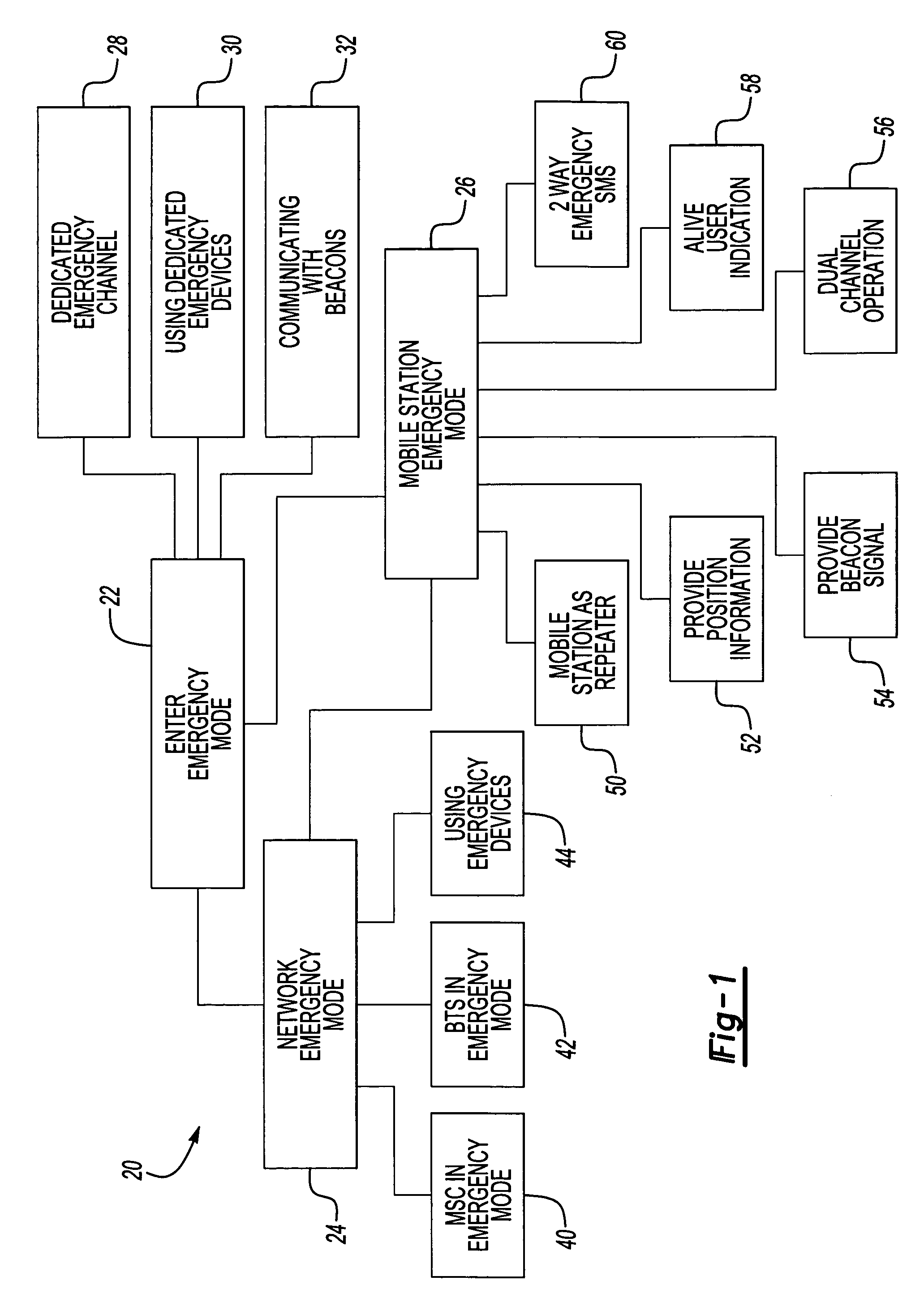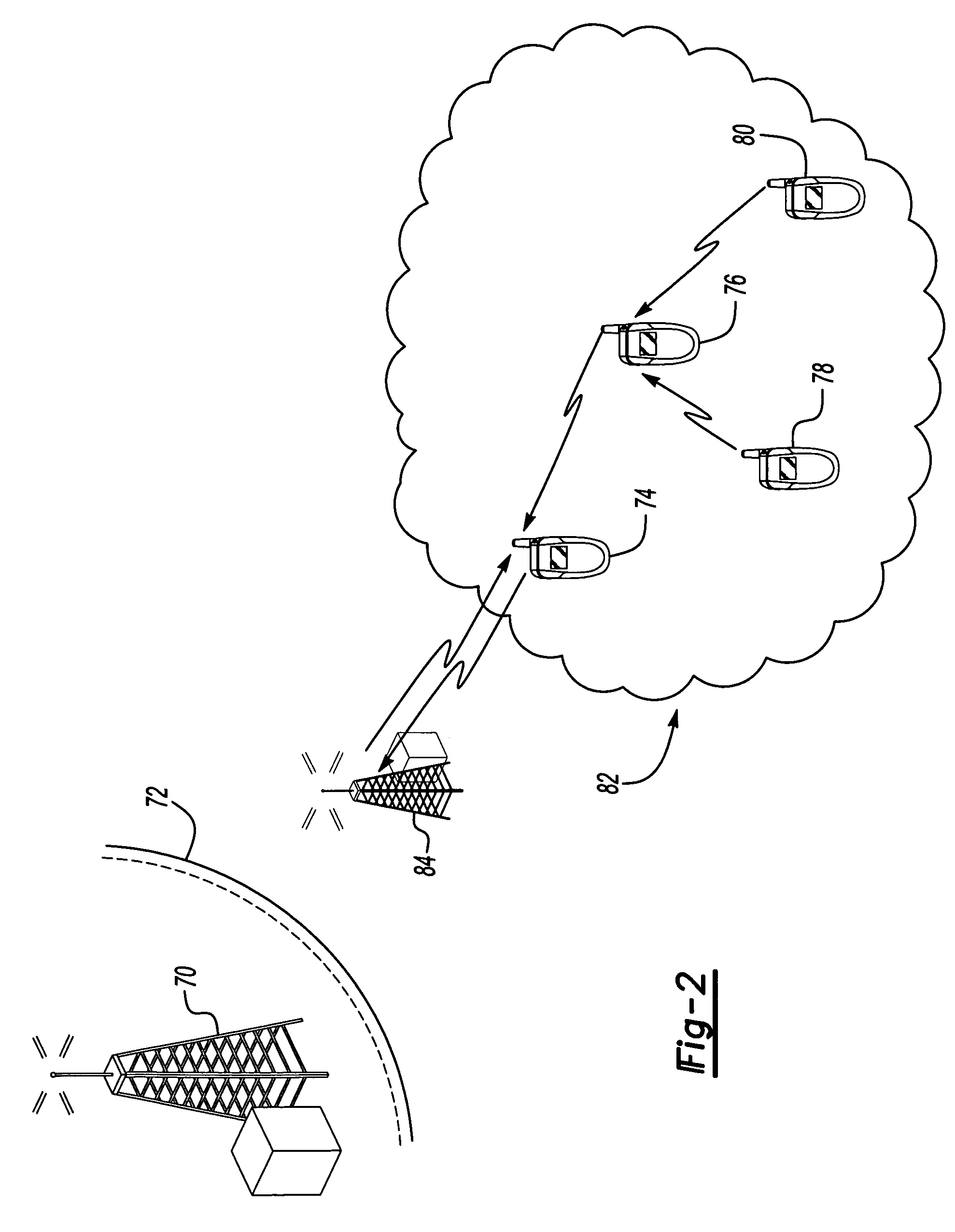Emergency mode operation in a wireless communication network
a wireless communication network and emergency mode technology, applied in the field of telecommunications, can solve the problems of inability to adequately transmit signals between base station transceivers and mobile stations within rubble, network less than optimal for addressing such situations, and traditional wireless communication networks prevent or degrade any use of wireless communication devices. to achieve the effect of enhancing location capacity
- Summary
- Abstract
- Description
- Claims
- Application Information
AI Technical Summary
Benefits of technology
Problems solved by technology
Method used
Image
Examples
Embodiment Construction
[0018]FIG. 1 schematically shows a wireless communication network 20 that is capable of operating in a normal operating mode for most situations and in an emergency operating mode under selected circumstances. When disaster or emergency conditions occur, at least portions of the network 20 enter into an emergency mode at 22. Entering the emergency mode may occur at a network level at 24 or at a mobile station level at 26.
[0019]Controlling when to enter the emergency mode occurs in one example based upon manual user input to an appropriate network device or a mobile station. In another example, the wireless communication device or devices that enter the emergency mode are capable of automatically entering the emergency mode. Given this description, those skilled in the art will be able to develop an appropriate manner for entering an emergency operating mode to meet the needs of their particular situation and to accommodate the particular technologies of the wireless network with whi...
PUM
 Login to View More
Login to View More Abstract
Description
Claims
Application Information
 Login to View More
Login to View More - R&D
- Intellectual Property
- Life Sciences
- Materials
- Tech Scout
- Unparalleled Data Quality
- Higher Quality Content
- 60% Fewer Hallucinations
Browse by: Latest US Patents, China's latest patents, Technical Efficacy Thesaurus, Application Domain, Technology Topic, Popular Technical Reports.
© 2025 PatSnap. All rights reserved.Legal|Privacy policy|Modern Slavery Act Transparency Statement|Sitemap|About US| Contact US: help@patsnap.com



